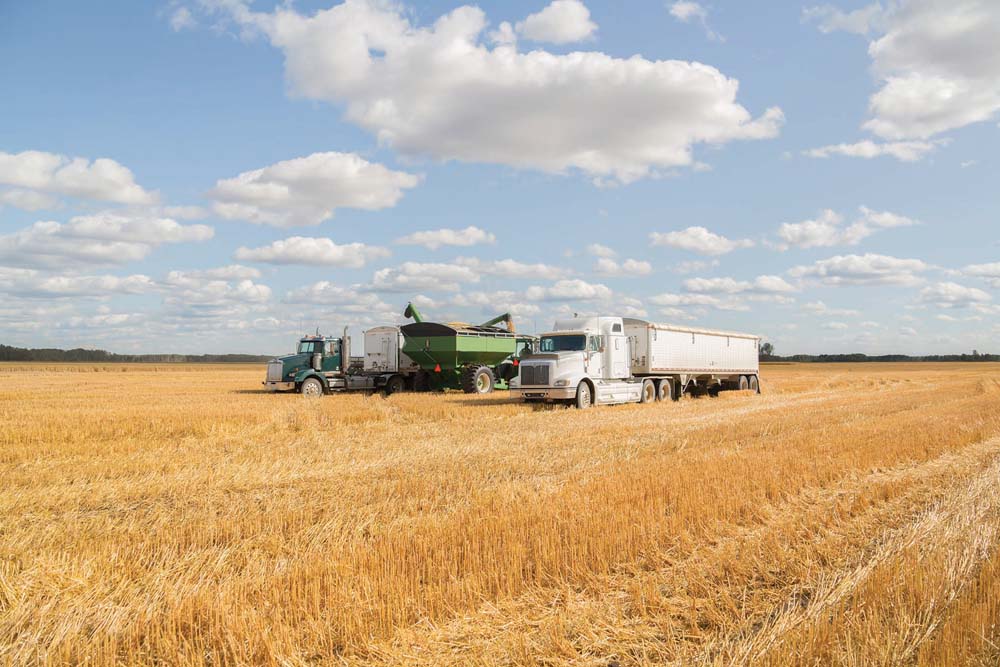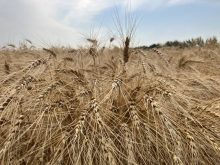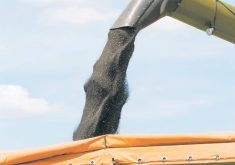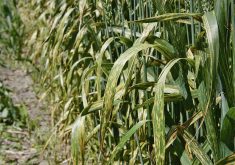Want to hit a home run this year? Grow kabuli chickpeas.
But only if you farm in the brown soil zone.
That pulse crop holds the No. 1 spot in this year’s forecast from the provincial agriculture department with an anticipated profit (before fixed costs and rent) of $347 an acre — if there’s a yield of 1,463 pounds per acre and a price of 45 cents per pound.
Read Also

Milk concentration plant officially opens in Alta.
Canadian raw-milk processing history made with start up of Dairy Innovation West milk concentration plant in Alberta
But the devil is in the details and the Cropping Alternatives 2023 report has lots of them, as expected yields and input costs vary by soil zone. That said, here are some highlights from each major soil zone:
Black soil:
No big surprises here. Canola tops the list at $312 net if you can harvest 46 bushels of No. 1. and get $17 a bushel. Prairie spring wheat ($307 net at 72 bushels an acre and $9.90 a bushel) is close behind.
Those are the only crops (aside from kabulis in the brown zone) to top $300 in the forecast.
However, hard red spring wheat, barley (feed and malt) and peas are all forecast to net in the mid- to high $200-an-acre range.
Costs are well into ‘oh my goodness’ territory. In 2014, the Cropping Alternatives report put direct expenses (seed, inputs, repairs and labour) for the most expensive crop (canola) at $291 an acre. This year, it’s $470 in the same soil zone and even feed barley and oats cost $340 an acre.
Brown soil:
Kabuli chickpeas aren’t the only surprise in this zone, as canola and wheat are pushed into the also-ran category because the forecast yields are much lower.
No. 2 is peas ($197 net before rent and fixed costs, 45 bushels an acre and a price of $11 a bushel) and No. 3 is durum ($162 net, 42 bushels an acre and $11.50 a bushel).
Growing costs are lower in this region but hardly cheap, from an estimated $377 an acre for canola to $267 for oats. But growing oats in this soil zone is forecast to be a losing proposition with a 58-bushel-an-acre crop netting only $9 an acre after direct costs but before paying rent or labour costs.
Dark Brown:
There’s nothing to get the heart racing in this soil zone.
Peas come out at No. 1, with a return of $211 an acre (on 48 bushels an acre) with everything except canola ($181 net on 35 bushels an acre) forecast to have a return of under $150 an acre.
This zone is a good place to view another aspect of the Cropping Alternatives report: break-even yield and how being a little below average can really impair the bottom line. For virtually all the crop forecasts in this zone, break-even yield is only slightly below expected yield.
Grey-Wooded:
The top three aren’t big surprises — Prairie spring ($292 net on 70 bushels an acre) followed by canola ($243 net on 44 bushels an acre) and malt ($222 net on 78 bushels and $7.90 a bushel).
But because of the forecasted yield gap, hard red spring trails Prairie spring by a wide margin. With an expected yield of 58 bushels an acre, a crop of No. 2 CWRS (11.5 per cent) is forecast to net only $199 after direct expenses, a gap of nearly $100.
Meanwhile hay and cereal silage are all expected to net in the mid $200 range.
In the Peace Region, it’s the same story with Prairie spring, canola and malt holding the top three spots.















